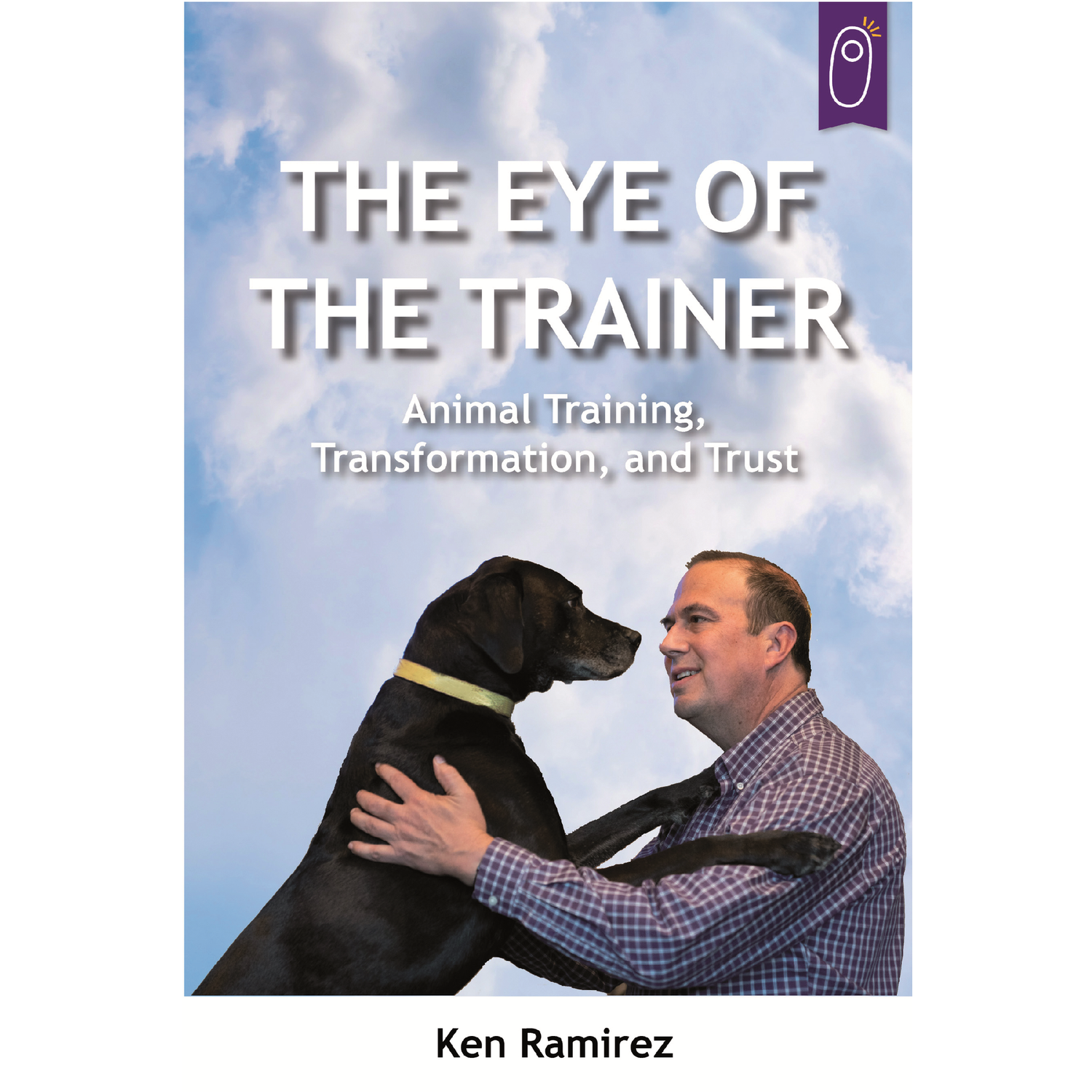
The Eye of the Trainer
Do we really need another book about training?” I often asked m yself as I was writing my new book. Each time I had doubts, however, I found myself in seminars and consultations answering the same questions again and again—questions I’ve addressed before in essays and articles that I’ve written over the years. So, I organized them into a single volume and The Eye of the Trainer: Animal Training, Transformation, and Trust was born. I begin the book with a new article called Why Training Matters! The article is the introduction to every major lecture and seminar that I present, something I have never before put into writing. I share my philosophy about why training matters, and this theme continues through the entire first chapter. All of the articles in Chapter One focus on simple or “basic” training concepts, with an emphasis on why they matter.
yself as I was writing my new book. Each time I had doubts, however, I found myself in seminars and consultations answering the same questions again and again—questions I’ve addressed before in essays and articles that I’ve written over the years. So, I organized them into a single volume and The Eye of the Trainer: Animal Training, Transformation, and Trust was born. I begin the book with a new article called Why Training Matters! The article is the introduction to every major lecture and seminar that I present, something I have never before put into writing. I share my philosophy about why training matters, and this theme continues through the entire first chapter. All of the articles in Chapter One focus on simple or “basic” training concepts, with an emphasis on why they matter.
In the second chapter I discuss tools and topics that cause confusion within our community consistently: the keep-going signal, jackpots, end-of-session signals, and even the debate about whether a clicker is helpful or needed for training.
The book is also filled with personal stories about training. Some I share frequently when I lecture, while others are unique lessons that I don’t talk about often. There are stories about Tulip, the livestock-guarding dog; Zsa Zsa, a dolphin with an incredible memory; CJ, the sea lion that had trouble accepting new trainers; Salsa, the skittish alpaca; Rudy, the reindeer that had never been trained; Carson, the search-and-rescue dog that lost his enthusiasm temporarily; and Lucky and Hastings, the dolphins that showed me the power of relationships. These stories, and many others, have taught me valuable lessons about training, and I am glad to be able to share them in this book.
Perhaps the most valuable chapters of the book are the ones that discuss the difficulties of dealing with people. Through the years I have faced many challenges from clients who haven’t completely embraced the use of positive reinforcement or who put up obstacles that slowed down training progress. I have stumbled and made mistakes along the way, and I include those errors, hoping that readers gain wisdom from the lessons I have learned.
I also share stories about problem-solving, concept training, scent detection, conservation training, zoo consulting, and more. Each story is short, most running three to six pages. They are stand-alone stories, so the reader can pick the book up and start anywhere; chapters and stories don’t have to be read in any particular order. However, I have tried to group articles by theme to make it easier to find stories of interest.
My goal is to inspire and inform, and I want readers to gain insights that might help their training. I hope The Eye of the Trainer proves to be a valuable addition to every trainer’s library. Get your copy now!
Happy Training,
Ken Ramirez

